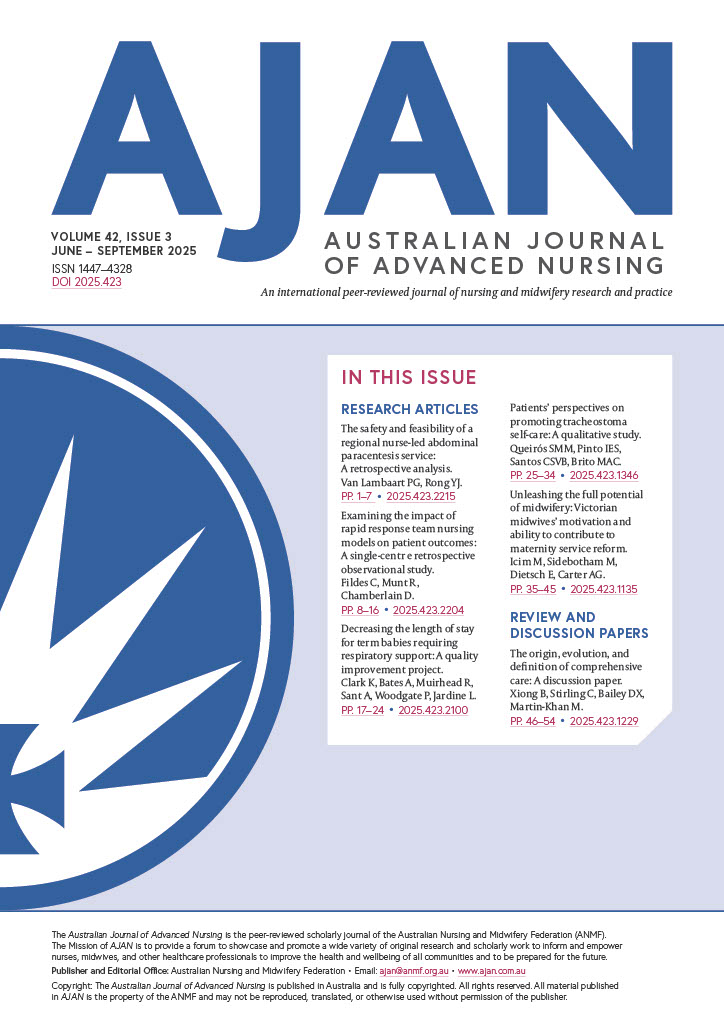Decreasing the length of stay for term babies requiring respiratory support: A Quality Improvement Project.
Main Article Content
Keywords
Quality improvement, Term infant, Respiratory distress, Nurse-led
Abstract
Objective: To decrease the mean length of stay in the neonatal intensive care unit (NICU) for term infants requiring less than 24 hours of continuous positive airway pressure (CPAP).
Background: Term infants with respiratory distress are frequently admitted to the NICU for non-invasive respiratory support with CPAP. The most common cause of respiratory distress in term babies is transient tachypnoea of the newborn (TTN). In term infants with mild to moderate cases of TTN, symptoms typically resolve within 24 hours. However, we observed that many term infants who were admitted with respiratory distress had prolonged admissions to NICU, even after their respiratory distress had resolved.
Study design and methods: Quality improvement methodology was used to undertake this study. We used the Evidence-Based Practice for Improving Quality (EPIQ) framework to conduct a single plan-do-study-act (PDSA) cycle. The principal change idea was developing and implementing a new guideline incorporating a nurse-led decision-making model of care. We chose outcome, process, and balancing measures to determine the risks and benefits of implementing this guideline. Periods pre- and post-implementation of the guideline were selected for comparison.
Results: A total of 69 term infants who required less than 24 hours of CPAP were included in the study (30 pre- and 39 post-). The mean length of stay in NICU significantly decreased from 21.4 to 14.0 hours (p<0.001). There were statistically significant decreases in the commencement of intravenous glucose infusions (83.3% to 23.1%, p<0.001), the time to enteral milk feed (8.0 to 2.4 hours, p<0.001), and the time to first suck feed (13.1 to 9.7 hours, p=0.003). No differences in other project measures were found.
Conclusions: This quality improvement project implemented a guideline that enabled nurse-led decision-making, significantly decreasing the length of stay in the NICU and the use of intravenous glucose infusions. There was no evidence of any adverse outcomes with this approach.
Implications for research, policy and practice: This quality improvement project demonstrated significant benefits after introducing a new guideline that facilitated a nurse-led decision-making model to assist in caring for term babies with respiratory distress treated with CPAP. More research is required to determine whether the observed benefits are maintained over time and if additional PDSA cycles would lead to further improvements. Future studies should consider additional outcome measures such as parental satisfaction and financial costs.

